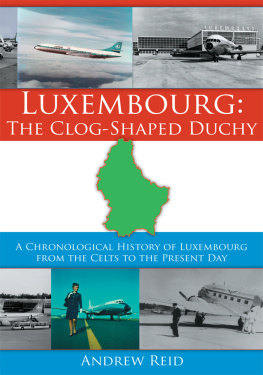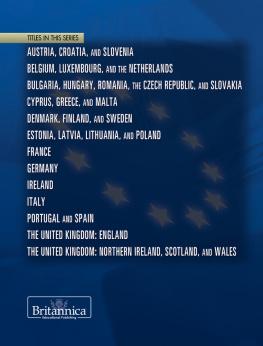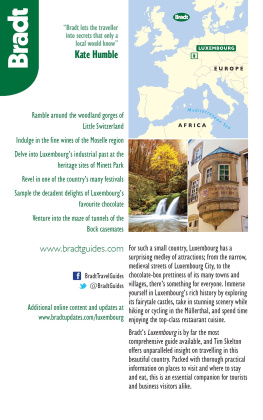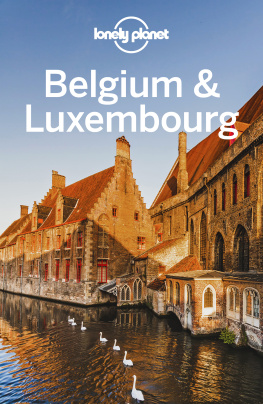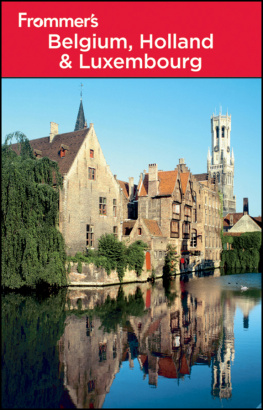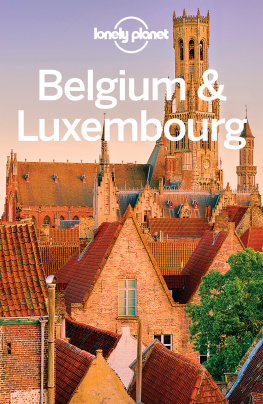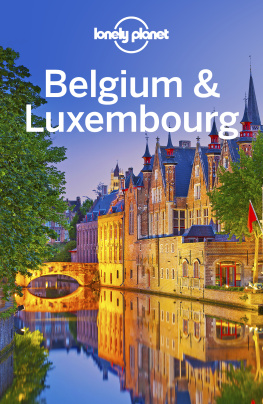Luxembourg:
The Clog-Shaped
Duchy
A Chronological History of
Luxembourg from the Celts to the
Present Day

2005 Andrew Reid. All Rights Reserved.
No part of this book may be reproduced, stored in a retrieval system, or transmitted by any means without the written permission of the author.
First published by AuthorHouse 11/28/05
ISBN: 1-4259-0189-1 (sc)
ISBN: 978-1-4670-0983-6 (ebk)
Printed in the United States of America
Bloomington, Indiana
Contents
Luxembourg is one of the worlds smallest states. Yet despite its size it was one of the great powers of the Western world, its influence reaching as far as Lithuania and the Czech Republic of today. Its heyday was from the twelfth to the fifteenth century but even beyond its apex it remains a fascinating study for the historian. Its history is a microcosm of Europe, every ripple and current impacting on this tiny nation. The architecture of the country shows evidence of layer upon layer of invader and conqueror; from Roman and Celtic relics, to Frankish and medieval forts and castles and later, grander fortifications from the French and Spanish. From Luxembourg arose crusaders and brutal princes as well enlightened reformers, such as the Empress Ermesinde. It was on Luxembourgs soil that great religious currents took root. In later centuries, its own rulers long gone, Luxembourg became a pawn in the great game of European history, passed from dynasty to dynasty. And for most of this time the people of Luxembourg watched from the sidelines, preserving their own culture, way of life and folklore. In the nineteenth century Luxembourg began to emerge as a small economic power in its own right, giving rise to artists, industrial magnates and writers. Having come through the crucible of two world wars and two invasions, Luxembourg found its role as a founding member of the new Europe, with influence and international prestige way beyond its size. What follows is the story of Luxembourg.
Beginnings of Lucilinburhuc
Human settlement has been present in Luxembourg from the very dawn of humanity. One of the very earliest traces of human settlement in Luxembourg is Magdalenian Man who was discovered near the town of Oetrange. Mesolithic and megalithic remains have also been unearthed by archaeologists in the Grand Duchy. However, our narrative of the history of Luxembourg really begins much later. Like much of northern Europe, Luxembourg in the time before Rome was settled by tribes of Celts, a race of people with origins in the Iberian peninsular. Their religion evolved into what is now known as Druidism. Wild Druid priests lurked in the thick forests of pine that covered the land. Strange rituals and sacrifices coexisted with a vibrant and rich culture, advanced in the skills of jewellery making and creative arts. There were refuges for Druid priests in the Mullerthal valley and on the Titelberg, and Widenberg hills, where sacrifices were performed. To this day a Celtic monument survives near the village of Altlinster, which consists of a mutilated figure cut into rock. Sometimes known as the Rock of Hertha, or as De Man an de Frau op der Lei in Luxemburgish, the monument is a lewd fertility symbol.
However, the Celts were not alone. Also in the area were two Belgian tribes, the Treveri, who lived near the present German city of Trier, just across the river Moselle, and the Mediomatrici tribe, who lived near the present day French city of Metz. The tribes were fiercely loyal to their own, and brutal and tenacious in the face of invasion. Such loyalty and grit were vital for survival in that brutal world where exclusion from the group meant certain death, either from hunger or from the packs of wolves who shared the land with its human inhabitants.
However to the south of Luxembourg a new and powerful force was massing, and in 53 BCE the Roman legions of Julius Caesar conquered Gaul and the territory which is now Luxembourg. The Treveri fought bravely and their leader, Indutiomar, died in battle, probably on the banks of the Alzette river. What happened to the survivors is unclear but for many their fate was slavery at the hands of the Romans.
Following their victory the Romans settled on the highly strategic position in what is now the Grand Duchy, attracted by fertile valleys and timber rich hills. They also added their own fortress to the Celtic ruins. The rocky gorges made ideal forts and the location secured the routes from the Roman settlement of Trier into France. The Romans built four principal forts in Luxembourg. One excavated fort was that of Dalheim in the south of the country, the others were at Helperknap, Alttrier and the old Celtic Titelberg site.
The Romans carved straight and efficient roads across the land, one of them being under the present-day Grand rue, the fashionable thoroughfare at the heart of Luxembourg City. In the Antonine Itinerary there is record of a rest stop on one such road referred to as Andethana, which corresponds to the present-day town of Niederanven. This marked the half-way point of the Arlon-Trier route, the former town being known as Oralaunum.
To this day Roman remains are to be found all over the Grand Duchy, notably in Diekirsch and Echternach. There are remains of a Roman bridge at Stadtbredimus and of Roman river works on the Moselle river. There is also recorded Roman settlement in Mondorf, the town sitting strategically on the Trier-Metz (Divodurum) road, as well of traces of a Roman town at Remich which was called Remacum by the Romans. The village of Christnach, near Larochette was known to the Romans as Crucenacum and significant Roman remains were found there. Another famous Luxembourgish town, Wasserbillig, was in fact the Roman Bilacus and it was here that the famous Column of Igel was built, reaching 75 meters, and proclaiming Roman imperial might to all who passed by. The town of Dalheim was known as Ricciacum. A Roman altar was unearthed at the Niederburg forest not far from Echternach, possibly dedicated to the goddess Diana, and near Bollendorf a stone in honour of Mercury was excavated. The church in the village of Berdorf has an altar upon which are reliefs of Hercules, Apollo, Juno and Minerva illustrating how Roman religion was incorporated quite readily into early Christianity.
Roman influence increased substantially as Trier grew into one of the most important towns in the Roman Empire, crowned with its still surviving Porta Negra arch. There is even evidence of early Roman commuters in the town of Echternach, who built villas in the hills around the town. One of the Roman forts was built near the present day Bock in Luxembourg City during the reign of Gallienus, and became known as Lucilinburhuc, meaning small castle.
There is evidence of substantial Roman settlement and civilisation in Luxembourg, illustrating that there was a comfortable and settled way of life in the land and not just a military presence. An example of this is the remains of well-preserved Roman mosaics near Diekirch and at Medernach. The mosaics depict, in frightening detail, the two-faced mythological figure Medusa.
Luxembourg provided Rome with plentiful supplies of timber, and there is evidence that the Romans exploited iron ore. It is also believed that Luxembourgish hams and wines were delicacies much in demand in Rome and were praised by the poet Ausonius. Ausonius was a teacher to the son of Emperor Valentinien and he wrote a long epic poem known as Mosella in which he lauds the wine of the area.
By the 4 th century however, the Roman Empire was falling apart, being over stretched and decadent. The Romans had never quite managed to stamp out the Celtic and Treveri spirit of independence in the conquered land, despite officially banning the Druid religion. During this time there were some recorded attempts at making converts by early Christians and an ancient shrine to St Quirinus in the Ptrusse valley dates from this era. Facing pressures from inside and out the Roman occupation of Luxembourg was drawing to a close. Eventually the Romans needed to pull out their troops in order to defend Rome itself, leaving the area vulnerable.
Next page
